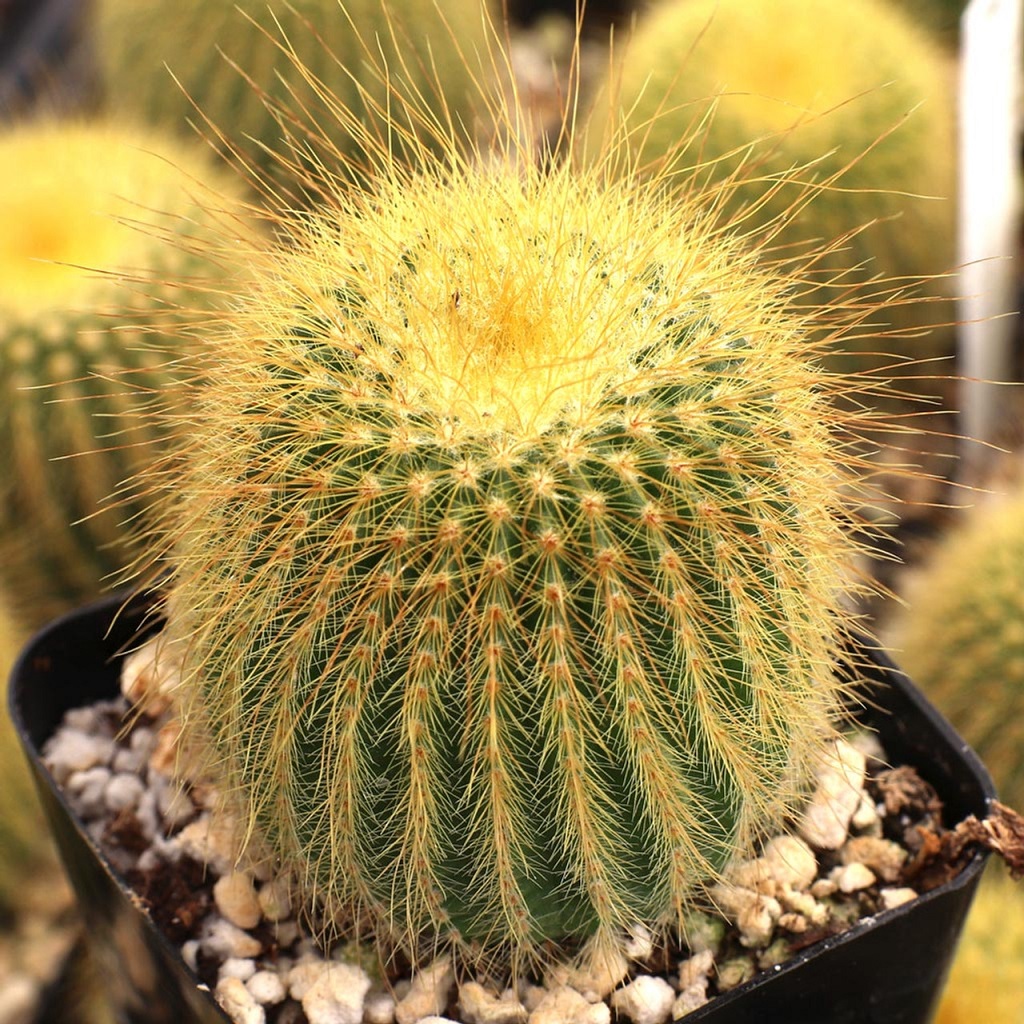Culture
Grow in a well-draining cactus potting mix. Prefers full sun but can benefit from some light shade during the hottest part of the day in desert climates to prevent scorching. Water thoroughly when the soil is dry to the touch during the active growing season (spring and summer), then reduce watering significantly in winter, allowing the soil to remain dry for extended periods. Protect from frost; it is not cold-hardy. Good air circulation is important. Fertilize sparingly during the growing season with a diluted cactus fertilizer.
Noteworthy Characteristics
Notocactus leninghausii, often sold under its synonym Parodia leninghausii, is a popular and attractive cactus known for its columnar shape and dense covering of harmless, golden-yellow spines, giving it a soft, fuzzy appearance. Younger plants are more ball-shaped, gradually elongating into a column. It often produces offsets from the base, forming appealing clumps over time. The bright yellow, satiny flowers that appear at the apex of mature stems in summer are a significant highlight. The genus name Notocactus refers to “south cactus,” derived from the Greek “notos” (south), indicating its South American origin. The specific epithet leninghausii honors Wilhelm Lenninghaus, a Brazilian cactus collector who was a correspondent of cactus expert Karl Schumann, or possibly a Mr. Leninghaus of Freiburg, Germany, who supported cactus expeditions.
Problems
Generally trouble-free if provided with good drainage and appropriate watering. Sunburn can occur if plants are suddenly moved into intense direct sun or during extreme heat waves.
Uses
Excellent as a container plant or houseplant, especially in colder climates. In frost-free regions (USDA zones 9b-11), it can be used in cactus gardens, rock gardens, or mixed succulent displays. Its upright form and golden color provide good contrast with other cacti and succulents. It’s a relatively easy-to-grow cactus, suitable for beginners.
